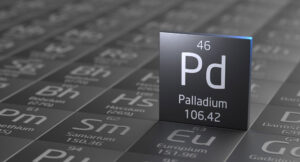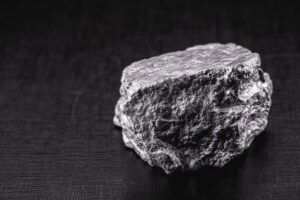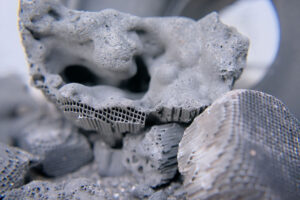Palladium is a shiny, silver-white metal that belongs to the platinum group elements.

It is widely used in the automotive industry, especially in catalytic converters for car exhaust systems. Additionally, palladium serves as a catalyst in various chemical reactions within the chemical industry. It is also popular in jewellery making and has several medical applications. One of palladium’s unique properties is its remarkable ability to absorb large amounts of hydrogen, much like a sponge. Furthermore, being a precious metal, palladium is chemically very stable.
How could I come in contact with it?
The largest source of palladium in the environment primarily comes from catalytic converters in vehicles. As hot exhaust gases pass through these converters, some palladium is released into the gas stream and enters the environment with the exhaust. As a result, elevated concentrations of palladium can be detected on busy roads.
Additionally, jewellery manufacturers and dentists use palladium, often as an alternative to or together with platinum, in jewellery and dental implants that are in close contact with the body.
How dangerous is the material for humans and the environment?
Palladium is a precious metal that does not dissolve when it comes into contact with bodily fluids, such as sweat and blood. For this reason, experts consider it safe to use in jewelry and implants. However, palladium is often found in high concentrations along busy roads because it is released from catalytic converters in cars. This can be harmful to plants and certain animal species. A decline in combustion engines could help reduce this issue.
Conclusion
Palladium is harmless to humans when used in jewellery or as an implant material. However, microorganisms and plants on roads could be damaged by car exhaust emissions.
By the way…
In 1989, two researchers generated significant hype by claiming to have discovered cold fusion using a palladium catalyst. They believed they had demonstrated that energy could be produced by fusing hydrogen atoms at room temperature, which would have potentially solved all the Earth’s energy problems. In nature, the nuclear fusion process occurs inside the sun at temperatures of several million degrees. Human-built fusion reactors, currently being tested worldwide, aim to replicate these solar conditions. Unfortunately, the researchers’ measurements could not be confirmed and were likely the result of measurement errors.

